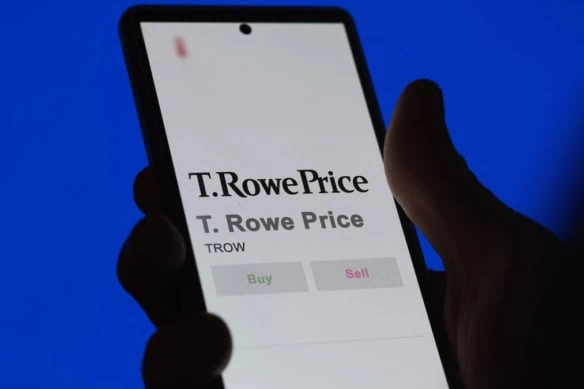T. Rowe Price has spent nearly 90 years building a reputation as a stalwart in wealth management and investment products. That work has been rewarded with $1.6 trillion in investor assets—much of which rests in the firm’s skillfully managed funds.
The keyword there is “managed.”
T. Rowe Price stands apart from many of its competitors because of its continued commitment and dedication to a human-centric approach to investing. While fund firms like Vanguard and BlackRock have aggressively built up product lineups controlled by rules-based indexes, the vast majority of T. Rowe Price’s offerings continue to offer portfolios hand-picked by human managers and analysis teams—just like they have been for decades.
If you’re not sure where to get started, I’m here to help. Read on as I explore some of the best T. Rowe Price mutual funds—a short list of core holdings that stand out for their strategic excellence and sound managerial judgment.
Disclaimer: This article does not constitute individualized investment advice. These securities appear for your consideration and not as personalized investment recommendations. Act at your own discretion.
Editor’s Note: Tabular data shown in this article are up-to-date as of Feb. 6, 2025.
Featured Financial Products
Table of Contents
Why T. Rowe Price?
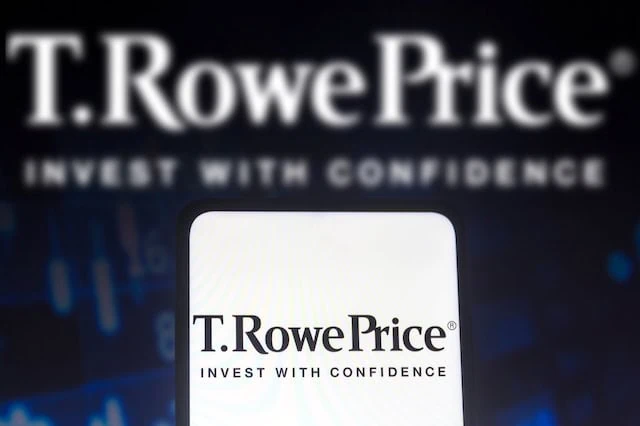
Thomas Rowe Price, Jr., founded his namesake company in 1937 as a wealth management firm. The firm launched its first mutual fund in 1950—74 years later, the company had exploded into a financial giant commanding well more than $1 trillion in assets, boasting nearly 8,000 associates worldwide, and offering more than 150 funds here in the U.S. alone.
That growth has come largely on the back of stellar managers—stars like former T. Rowe Price Health Sciences head Kris Jenner and current T. Rowe Price Capital Appreciation Manager David Giroux. But it’s also worth noting that while T. Rowe isn’t really known for skinflint fees, its expenses tend to be quite competitive, helping to attract investor money, too.
A pair of stats help tell the tale:
— More than 90% of its Investor-class funds have expense ratios below their Lipper averages.
— More than 70% of T. Rowe funds with a minimum 10-year track record beat their Lipper average for the period.
In short, T. Rowe offers productive, cost-effective investment products across numerous core and satellite strategies. And it does so while keeping human managers front and center.
Do you want to get serious about saving and planning for retirement? Sign up for Retire With Riley, Young and the Invested’s free retirement planning newsletter.
How Were the Best T. Rowe Price Funds Selected?

T. Rowe Price boasts more than 150 mutual funds across a number of strategies—stock, bond, allocation, target-date, and more. That’s many, many more than any one investor would ever need, but given their generally high overall quality, whittling it down to a few select choices isn’t exactly easy.
I’ve started with a quality screen, including only T. Rowe funds that have earned the top Morningstar Medalist rating of Gold. Whereas Morningstar’s Star ratings are based upon past performance data, Morningstar Medalist ratings are a forward-looking analytical view of a fund. Per Morningstar:
“For actively managed funds, the top three ratings of Gold, Silver, and Bronze all indicate that our analysts expect the rated investment vehicle to produce positive alpha relative to its Morningstar Category index over the long term, meaning a period of at least five years. For passive strategies, the same ratings indicate that we expect the fund to deliver alpha relative to its Morningstar Category index that is above the lesser of the category median or zero over the long term.”
A Medalist rating doesn’t mean Morningstar is necessarily bullish on the underlying asset class or categorization. It’s merely an expression of confidence in the fund compared to its peers.
Unlike some of the other big-name fund providers, T. Rowe Price hasn’t made a name for itself by pushing fees to the floor. So I’ve limited the list to T. Rowe mutual funds with costs that are at least considered average within their category, if not below average.
From the remaining universe of several dozen funds, I selected a range of products that address various core portfolio goals, have good-to-great track records, and are generally accessible to most investors (reasonable investment minimums, can be bought in most accounts).
The Best T. Rowe Price Mutual Funds to Buy

Next are seven great T. Rowe Price funds best suited as core portfolio holdings.
All of the T. Rowe Price funds listed here have a $2,500 minimum initial investment unless otherwise indicated (after that, additional purchase minimums are just $100) and are open to new investors. However, if you purchase these funds within an IRA, you can typically do so at smaller minimums, often just $1,000. And if any of these T. Rowe Price funds are available in your 401(k), you can buy them with no investment minimum.
Also worth noting: Every one of these funds is actively managed. While T. Rowe does have a solid lineup of index funds, managed funds earn an overwhelming majority of the firm’s Morningstar Gold Medalist ratings.
In no particular order …
1. T. Rowe Price All-Cap Opportunities Fund

Style: U.S. all-cap growth stock
Assets under management: $15.0 billion
Dividend yield: 0.1%
Expense ratio: 0.79%, or $7.90 per year for every $1,000 invested
I’d normally start this list with either an S&P 500 index fund or a standard U.S. large-cap blend fund that would act as a portfolio core.
However, no T. Rowe Price fund meeting that description made the cut … so let’s jump right to the fun stuff!
T. Rowe Price All-Cap Opportunities Fund (PRWAX) is a growth-stock fund that doesn’t discriminate by size—it’s happy to hold small-, mid-, and large-cap stocks as long as they exhibit the qualities desired by manager Justin White, who has been with the fund since 2016. Those traits include earnings growth beyond the average of the Russell 3000 Index, favorable company fundamentals, effective management, and reasonable stock valuations.
Related: 10 Best Vanguard Funds for the Everyday Investor
Well, PRWAX might be open to companies of all sizes, but it clearly has favorites—fully three-quarters of assets are invested in large-cap stocks, with another 18% in mids and the remainder in smalls. Nothing odd there. White is content to hold just about 100 or so stocks, and with about $15 billion to work with, he wouldn’t want to move the market in smaller companies by funnelling too much of his assets.
And, in fact, top holdings give us plenty of what we’d see out of a typical large-cap fund—Microsoft (MSFT), Apple (AAPL), Nvidia (NVDA), and other “Magnificent 7” stocks all feature prominently in the portfolio. However, while technology earns the greatest weight at 30%, that’s actually about 10 to 15 percentage points less than what you see out of similarly built funds! Still, the remaining assets are heavily tilted toward cyclical sectors, while defensive areas like staples and utilities have low-single-digit weights.
“T. Rowe Price All-Cap Opportunities is a standout large-growth offering featuring a precocious portfolio manager who shines while executing a flexible investment mandate,” says Adam Sabban, senior analyst at Morningstar, which gives T. Rowe a Gold Medalist rating. “Because of White’s willingness to swiftly rearrange the portfolio as markets evolve, this offering may stand out more when markets exhibit a compressed cyclical pattern. But it has what it takes to stand out in a competitive peer group over the long term.”
PRWAX is no index fund, and it’s not priced like one—though at 0.79% annually, it’s right at the large-cap category average. But it has beaten the category average over all medium- and long-term time periods, and is in the top 10% of funds over the trailing 10 and 15 years. And that’s plenty good enough to land All-Cap Opportunities on our list of the best T. Rowe Price funds you can buy.
Related: 13 Dividend Kings for Royally Resilient Income
Featured Financial Products
2. T. Rowe Price Large-Cap Value Fund

Style: U.S. large-cap value stock
Assets under management: $3.5 billion
Dividend yield: 1.7%
Expense ratio: 0.70%, or $7.00 per year for every $1,000 invested*
Next up is the T. Rowe Price Large-Cap Value Fund (TRLUX), which sits somewhat opposite of the growthy PRWAX.
I say “somewhat” opposite because the growth and value factors are often pitted against one another as if they’re conflicting ideologies. They’re not. You can indeed have value-priced growth. There’s even a name for it: growth at a reasonable price, or GARP. That said, in many cases, growth stocks carry high valuations, and value stocks have more modest fundamental growth potential, and thus, growth and value will eternally be locked in a stock market Spy vs. Spy.
But I digress.
Related: The 8 Best Dividend ETFs [Get Income + Diversify]
T. Rowe Price Large-Cap Value Co-Managers John Linehan and Gabriel Solomon are tasked with targeting large-cap companies that feature one or more of several value traits, including:
— Low price-to-earnings (P/E), price-to-sales (P/S), price-to-book (P/S), or price-to-cash flow (P/CF) relative to the market, a company’s peers, or the company’s own historical valuations
— Low stock price relative to the company’s underlying asset value or intrinsic value
— A sound balance sheet and other financial fundamentals
— Companies that could benefit from restructuring activities (that would in theory “unlock” value)
While TRLUX is a large-cap value stock fund, its median market cap is significantly smaller than other funds in its category. At the moment, it’s heaviest in financials, such as Wells Fargo (WFC), Bank of America (BAC), and Charles Schwab (SCHW), which account for roughly a quarter of assets. It also has double-digit weights in industrials and health care. And while the portfolio is predominantly U.S.-based, it’s not entirely, with about 5% of holdings in international firms.
Related: 7 High-Quality, High-Yield Dividend Stocks
The value tilt also explains a moderately better-than-average yield.
One noteworthy comment from Morningstar on its Gold Medalist rating for T. Rowe Price Large-Cap Value: “At least one member of the team has invested $1 million or more of their own capital in the fund, which helps align their interests with the strategy’s investors. To be clear: Fund managers virtually always have investors’ best interests in mind, but there’s some added confidence and comfort when a manager actually has real skin in the game.
* 0.82% gross expense ratio is reduced with a 0.12% fee waiver until at least April 30, 2026.
A $100 stock paying $1 in annual dividends yields 1%. But because you bought the stock at $50, your yield on cost is 2%.)
Related: 7 Best High-Dividend ETFs for Income-Minded Investors
3. T. Rowe Price Dividend Growth Fund

Style: U.S. large-cap dividend-growth stock
Assets under management: $24.7 billion
Dividend yield: 1.0%
Expense ratio: 0.64%, or $6.40 per year for every $1,000 invested
If you see a fund with “dividend” in its name and assume it’s trying to deliver a superior dividend yield, the odds say you’ll be right more often than you’ll be wrong. But that’s not the case with T. Rowe Price Dividend Growth Fund (PRDGX).
Indeed, it’s not even the point.
Dividend-growth funds typically aim to own companies that regularly improve their payouts over time. This accomplishes a couple of things. For one, while it might not score you high current yield, it can generate a higher “yield on cost” down the road. Yield on cost is what you’re actually earning based on the price at which you bought the stock. (Example: A $100 stock paying $1 in annual dividends yields 1%. But because you bought the stock at $50, your yield on cost is 2%.)
Related: The Best REITs to Invest In for 2025
Also, dividend-growth companies tend to be high-quality companies. After all, you can’t sustainably increase how much cash you’re shelling out to shareholders if you’re unable to turn a profit—you need strong financials and excellent cash flows. So dividend growth is often considered a quality screen of sorts that ensures the fund owns a higher grade of company.
That’s what you get with PRDGX. “Manager Tom Huber focuses on financially healthy companies that can sustain above-average payout growth as he believes dividend growers offer outperformance with lower volatility,” says Morningstar Analyst Stephen Welch. The fund’s roughly 100-stock portfolio, which is almost entirely made up of U.S. stocks, is full of serial dividend raisers like Visa (V) and Chubb (CB).
Specifically, though, Huber is tasked with building a portfolio of companies “that have a strong track record of paying dividends or that are expected to increase their dividends over time.” I emphasized “or” because it’s … well, different.
Many dividend-growth index funds are required, thanks to the rules that govern the index, to own companies that have improved their payouts without interruption for some set period of time. That’s not the case with T. Rowe Price Dividend Growth. Huber has full discretion here. For instance, holding Ross Stores actually suspended its distribution for a few quarters in 2020—and was booted from the Dividend Aristocrats as a result. (However, it resumed payouts in 2021 at its previous level and has raised each year since then, so it’s certainly a dividend grower once more.)
The actively managed T. Rowe Price Dividend Growth ETF (TDVG) offers similar exposure and charges 0.50% annually.
Related: 10 Best Dividend Stocks to Buy [Steady Eddies]
4. T. Rowe Price Global Stock Fund

Style: Global large-cap growth stock
Assets under management: $7.1 billion
Dividend yield: 0.1%
Expense ratio: 0.80%, or $8.00 per year for every $1,000 invested
The U.S. has been one of the world’s most fruitful stock markets for decades. So if you believe in the American economy’s ability to keep growing, naturally, you should continue to invest the lion’s share of your money in U.S. assets.
Still, many advisors will tell you it’s important to diversify geographically, too—a little hedging of bets, sure, but also, there are hundreds of high-achieving companies scattered across the globe, and it makes sense to have a little exposure to those firms, too.
Related: 7 Best Fidelity Retirement Funds [Low-Cost + Long-Term]
You can get the best of both worlds with the T. Rowe Price Global Stock Fund (PRGSX).
An important note about fund terminology. The word “international” in a fund’s name implies its holdings come from anywhere but America. However, the word “global” implies that the fund holds both U.S. and international stocks. PRGSX is the latter, offering a roughly 65% domestic/35% foreign split.
Manager David Eiswert and his team of global analysts home in on companies capable of generating above-average earnings growth over time. “Eiswert filters the global equity universe through his investment framework, which emphasizes investing in quality companies at a time when fundamentals are poised to inflect higher, but without paying too much,” says Morningstar Analyst Adam Sabban. Currently, Global Stock’s team has locked in on about 95 holdings—overwhelmingly large-cap in nature, and with a clear bent toward growth stocks.
Related: 9 Best Fidelity ETFs for 2025 [Invest Tactically]
The international portion of the portfolio is most heavily tilted toward Japan, which still only commands around 6% of assets. The U.K., Germany, and Taiwan all sit around 4% to 5% apiece. The top 10 holdings are thick in U.S. stocks, but Taiwan Semiconductor (TSM), Unilever (UL), and London Stock Exchange Group (LNSTY) make the cut for the away team.
Even at its worst, PRGSX still tends to top the category average. But when it shines—which it does over most medium- and long-term time frames—it’s not just one of the best T. Rowe Price mutual funds you can buy, but one of the best funds period.
Related: The 7 Best Closed-End Funds (CEFs)
5. T. Rowe Price Short Duration Income Fund

Style: Short-term bond
Assets under management: $67.2 million
SEC yield: 4.9%*
Expense ratio: 0.40%, or $4.00 per year for every $1,000 invested**
Most investors will want some exposure to bonds—debt issued by governments, companies, and other entities that pay interest to bondholders. But how much will largely depend on your age.
Bonds tend to be much less volatile than stocks, for better or worse; it limits downside, yes, but it also limits upside. Instead, most of the return from bonds comes from the steady stream of interest income they produce. They’re not great for generating wealth, which is your prime concern when you’re younger, but they’re outstanding for protecting wealth, which becomes increasingly pivotal as you age.
But it’s tough to go out and buy, say, a single bond. Data and research on individual issues is much thinner than it is for publicly traded stocks, plus, some bonds have minimum investments in the tens of thousands of dollars. So, your best (and most economical) bet is to buy a bond fund, which can provide you with access to hundreds if not thousands of bonds.
Related: The 13 Best Mutual Funds You Can Buy
T. Rowe Price Short Duration Income Fund (TSDLX) is a particularly defensive bond fund. Portfolio co-managers Cheryl Mickel and Steven Kohelnstein invest in a variety of short-duration fixed-income issues, including corporate bonds, asset-backed securities (ABSes), U.S. Treasury bonds, mortgage-backed securities (MBSes), commercial MBSes (CMBSes), and other government-related debt. It’s largely U.S.-centric, but not entirely—a little less than 20% of assets are invested in issues from the U.K., South Korea, Indonesia and a handful of other countries.
Maturities are overwhelmingly on the short side, with some 95% of bonds expiring in five years or less. That contributes to an extremely low duration (a measure of interest-rate risk). Right now, TSDLX’s average duration is a lean 1.9 years, implying that a 1-percentage-point hike in interest rates would result in a short-term loss of just 1.9%—but conversely, a 1-percentage-point decline in rates would result in a modest gain for the fund.
A long way of saying: TSDLX is about limiting volatility and collecting income. Indeed, the income, at nearly 5% right now, is substantial for such relatively low risk.
* SEC yield reflects the interest earned across the most recent 30-day period. This is a standard measure for funds holding bonds and preferred stocks.
** 1.00% gross expense ratio is reduced with a 0.60% fee waiver until at least Sept. 30, 2025.
Do you want to get serious about saving and planning for retirement? Sign up for Retire With Riley, Young and the Invested’s free retirement planning newsletter.
6. T. Rowe Price Global Allocation Fund

Style: Global allocation
Assets under management: $812.3 million
Dividend yield: 2.5%
Expense ratio: 1.01%, or $10.10 per year for every $1,000 invested*
If you want a simpler portfolio solution that covers multiple assets in a single fund, you might want to look for an “allocation fund,” aka “balanced fund,” which invests in both stocks and bonds (and occasionally additional assets as well).
These funds are often called a “portfolio in a can,” and if any fund deserves the moniker, it’s T. Rowe Price Global Allocation Fund (RPGAX).
RPGAX holds not just stocks and bonds, but also alternative investments, aiming for a respective 60/30/10 blend of those assets. But that doesn’t really give you an idea of just how much stuff it really holds.
Related: 7 High-Quality, High-Yield Dividend Stocks
It holds U.S., developed-market and emerging-market stocks across all 11 sectors. It holds U.S. and international debt, including Treasuries, inflation-indexed Treasury bonds, investment-grade corporates, and junk debt. And it holds all these through both individual issues and other mutual funds. RPGAX also holds a hedge fund-of-funds, a multi-strategy fund, and even a few currencies.
“Many of the underlying managers steer impressive strategies,” says Morningstar Analyst Thomas De Fauw. “And while the portfolio includes 20-plus strategies, the niche holdings serve a purpose. For example, T. Rowe Price European Stock and T. Rowe Price Japan offer more exposure to smaller firms and thus more diversification than the firm’s broad non-US equity funds.”
Global Allocation Co-Manager Charles Shriver has been on board since inception in 2013, while Toby Thompson and Christina Noonan are newer additions. Together, along with a multi-asset team of more than 70 members, they have guided RPGAX to solid performance, outperforming both their category average and benchmark index in just about every single meaningful time period.
Related: 10 Monthly Dividend Stocks for Frequent, Regular Income
Featured Financial Products
7. T. Rowe Price Capital Appreciation

Style: Moderate allocation
Assets under management: $66.3 billion
Dividend yield: 2.1%
Expense ratio: 0.71%, or $7.10 per year for every $1,000 invested*
T. Rowe Price Capital Appreciation (PRWCX) comes at the tail end of this list—very much out of order—because of its status. Specifically, PRWCX is closed to most new investors. This is very much an exception to the rules I laid out above. However, I’m still including it among the best mutual funds you can buy both because of its extremely high quality and because this T. Rowe fund still might be available to some investors via select registered investment advisory (RIA) firms.
Related: The 10 Best Fidelity Funds You Can Own
T. Rowe Price Capital Appreciation is another allocation fund—this one designed to invest at least half its assets in stocks, with the rest socked into various debt securities, including corporate bonds, government debt (Treasuries, MBSes, asset-backed securities), and bank loans. It’s primarily a domestic fund, but it can hold at least a quarter of its assets in foreign equities and debt. PRWCX, which currently holds around 240 securities, places 60% of assets in domestic shares and a little more than 35% in domestic bonds, sprinkling the rest around foreign bonds, foreign stock, preferred stock, convertible securities, and cash.
Morningstar Analyst Jason Kephart calls David Giroux, who has managed the fund since June 2006, “a manager unlike any other.”
Related: 10 Best Vanguard Funds for the Everyday Investor
“He’s displayed an innate ability to opportunistically invest across both equities and bonds, capturing pockets of value through strong stock selection and impressively timed shifts between stock and bond exposure,” Kephart says. “His execution of this strategy’s nimble, contrarian approach has delivered top-notch returns for its investors.”
Indeed, during his tenure, Giroux has beaten all of his category peers on both an absolute and risk-adjusted basis. He has also bested all peers over the trailing 10-year period, and has beaten 95% over the trailing three and five years.
T. Rowe Price Capital Appreciation’s only sticking point is a critical one—availability. It’s largely closed, so most of us can’t just log into our browsers and buy this fund. But again, if your money is managed through certain RIAs, you might actually be able to buy shares of this gem … and if you find you can, you should.
* 0.73% gross expense ratio is reduced with a 0.02% fee waiver until at least Feb. 28, 2027.
Related: 9 Best Schwab Funds You Can Buy: Low Fees, Low Minimums
What Is a Mutual Fund?

A mutual fund is an investment company that pools money from many investors to buy stocks, bonds or other securities. The investors get the benefits of professional management and certain economies of scale. A pool of potentially millions or even billions of dollars is large enough to diversify and might have access to investments that would be impractical for an individual investor to own.
Here’s an example: An investor wanting to mimic the S&P 500 Index (an index made up of 500 large, U.S.-listed companies) would generally have a hard time buying and managing a portfolio of 500 individual stocks, especially in the exact proportions of the S&P 500 Index. Another example: An investor wanting a diversified bond portfolio might have a hard time building one when individual bond issues can have minimum purchase sizes of thousands (or tens of thousands!) of dollars.
Equity funds or bond funds will generally be a far more practical solution.
How to Invest in a Mutual Fund

To invest in a mutual fund, you’ll need to open an account with the fund sponsor or open a brokerage account with a broker that has a selling agreement in place with the fund sponsor. As a general rule, most large, popular mutual funds will be available at most brokers, so if you open a traditional investment account (like an IRA or brokerage), you’ll have access to most of the mutual funds you’d ever want to invest in.
Actively Managed Funds vs. Index Funds
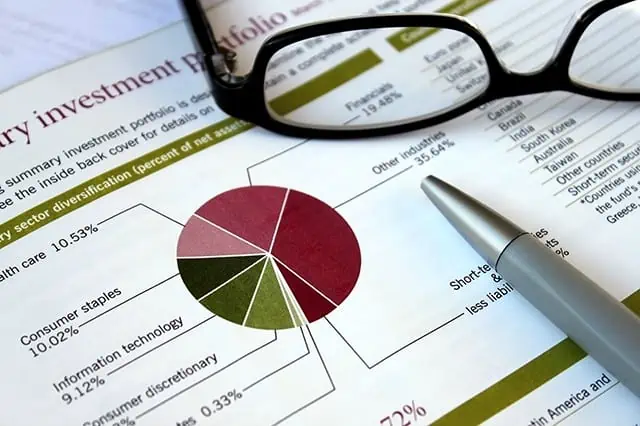
There are infinite types of mutual funds, but all can be divided into two main camps:
— actively managed funds
— passively managed funds, also known as passive funds or, most commonly, index funds
Actively managed funds have professional managers that use their discretion to buy and sell securities. Whether they are value funds, growth funds, or anything in between, they are all essentially run the same way: A manager or team of managers buys and sells stocks, bonds, or other securities in the pursuit of price returns, dividends/income, or both.
Related: The 7 Best Mutual Funds for Beginners
Index funds, in contrast, are passive. There’s no manager actively looking to “beat the market.” The fund is simply looking to copy an index—which is based on a set of rules that the index automatically applies—enjoying that underlying investment exposure. Actively managed stock funds will try to cherry pick the stocks or bonds they like best. An index fund simply buys whatever its rules say to buy, then lets that portfolio run until it’s time to “rebalance” (apply the rules again).
Related: 6 Best Stock Recommendation Services [Stock Tips + Picks]
The primary advantages of actively managed funds is that a talented manager can potentially outperform over time and may be adept at navigating a difficult period such as a bear market. But with an index fund, you generally get much lower costs in terms of management fees and trading expenses, better tax efficiency and performance that often ends up being better than that of many active managers.
Do you want to get serious about saving and planning for retirement? Sign up for Retire With Riley, Young and the Invested’s free retirement planning newsletter.
How Are Mutual Funds Different From Exchange-Traded Funds?

There is a lot of overlap between traditional mutual funds and their cousins, exchange-traded funds (ETFs). That’s because exchange-traded funds are very similar to mutual funds, but with a few different traits.
Related: The 15 Best ETFs to Buy for a Prosperous 2025
Like traditional mutual funds, an ETF will hold a basket of stocks, bonds, and other securities. These can be broad and tied to a major index like the S&P 500, or they can be exceptionally narrow and focus on a specific sector or even a specific trading strategy. For the most part, anything that can be held in an exchange traded fund can also be held in a mutual fund.
But there are some major differences. When you invest in a mutual fund, you (or your broker) actually send money to the manager, who in turn uses the cash to buy stocks or other investments. When you want to sell, the manager will sell off a tiny piece of the securities the mutual fund owns and send you the proceeds. Money generally enters or exits the fund once per day.
Related: Best Target Date Funds: Vanguard vs. Schwab vs. Fidelity
Exchange-traded funds, on the other hand, trade on the New York Stock Exchange or another major exchange like a stock. If you want to buy shares, you don’t send the manager money; you just buy shares from another investor on the open market.
There are two advantages here. The first is that ETFs allow for intraday liquidity. If you want to buy or sell in the middle of the trading day—or multiple times throughout the trading day—you can.
The second advantage is tax efficiency. In a traditional mutual fund, redemptions by investors can generate selling by the manager that creates taxable capital gains for the remaining investors who didn’t sell. This doesn’t happen with ETFs, as the manager isn’t forced to buy or sell anything when an investor sells their shares.
Related: The 9 Best ETFs for Beginners
What Are Balanced Mutual Funds?
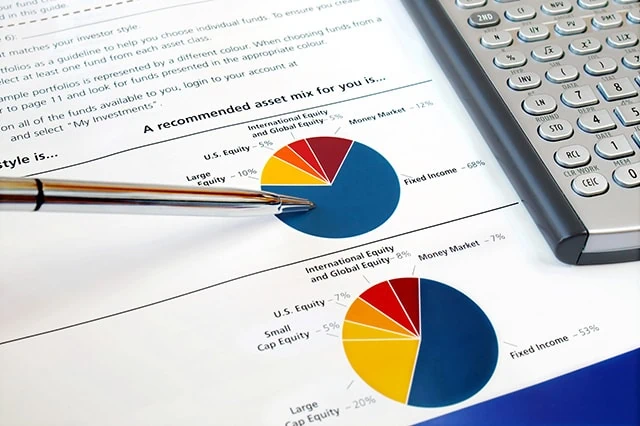
Balanced mutual funds, sometimes also called “hybrid funds” or “allocation funds,” hold both stocks and bonds. However, while the name might imply that all balanced funds hold an equal amount of stocks and bonds, that’s not quite the case.
Some balanced funds are “aggressive” and dedicate far greater assets to stocks than bonds—say, 80/20 stocks, or 70/30 stocks. Meanwhile, some balanced funds are “conservative” and invest most of their assets in bonds. Still more are much closer to a 50/50 split.
Like Young and the Invested’s content? Be sure to follow us.
Why Does a Fund’s Expense Ratio Matter So Much?

Every dollar you pay in expenses is a dollar that comes directly out of your returns. So, it is absolutely in your best interests to keep your expense ratios to an absolute minimum.
The expense ratio is the percentage of your investment lost each year to management fees, trading expenses and other fund expenses. Because index funds are passively managed and don’t have large staffs of portfolio managers and analysts to pay, they tend to have some of the lowest expense ratios of all mutual funds.
This matters because every dollar not lost to expenses is a dollar that is available to grow and compound. And over an investing lifetime, even a half a percent can have a huge impact. If you invest just $1,000 in a fund generating 5% per year after fees, over a 30-year horizon, it will grow to $4,116. However, if you invested $1,000 in the same fund, but it had an additional 50 basis points in fees (so it only generated 4.5% per year in returns), it would grow to only $3,584 over the same period.
Related: 13 Best Long-Term Stocks to Buy and Hold Forever
As even novice investors probably know, funds—whether they’re mutual funds or exchange-traded funds (ETFs)—are the simplest and easiest ways to invest in the stock market. But the best long-term stocks also offer many investors a way to stay “invested” intellectually—by following companies they believe in. They also provide investors with the potential for outperformance.
So if you’re looking for a starting point for your own portfolio, look no further. Check out our list of the best long-term stocks for buy-and-hold investors.
Related: 7 Best High-Quality, High-Yield Dividend Stocks to Buy
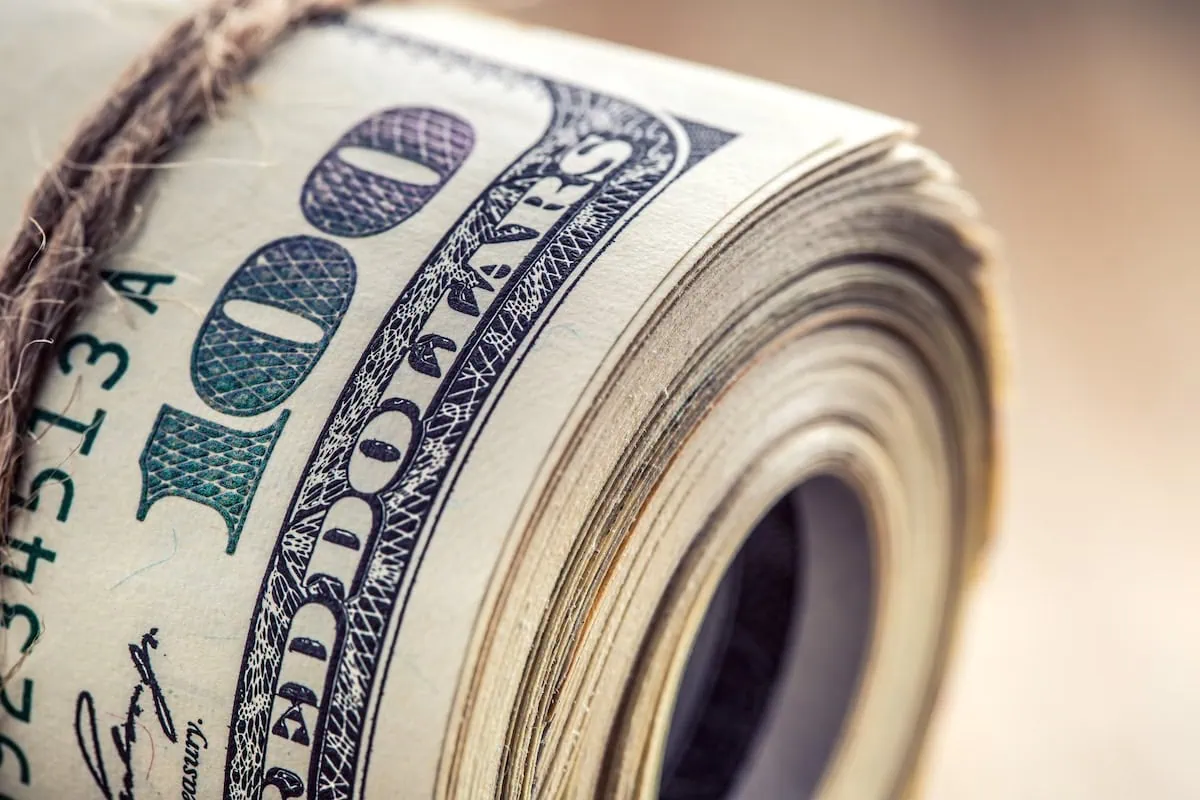
Looking to earn some serious dividend income? These high-quality, high-yield dividend stocks are well-regarded not only for their high payouts, but for the sustainability of those dividends (at least in the eyes of investment professionals covering the stocks).
We look into these seven companies’ dividend profiles and why analysts think their stocks are well worth holding in your income portfolio.
Related: 10 Best Monthly Dividend Stocks for Frequent, Regular Income

The vast majority of American dividend stocks pay regular, reliable payouts—and they do so at a more frequent clip (quarterly) than dividend stocks in most other countries (typically every six months or year).
Still, if you’ve ever thought to yourself, “it’d sure be nice to collect these dividends more often,” you don’t have to look far. While they’re not terribly common, American exchanges boast dozens of monthly dividend stocks.
Please Don’t Forget to Like, Follow and Comment
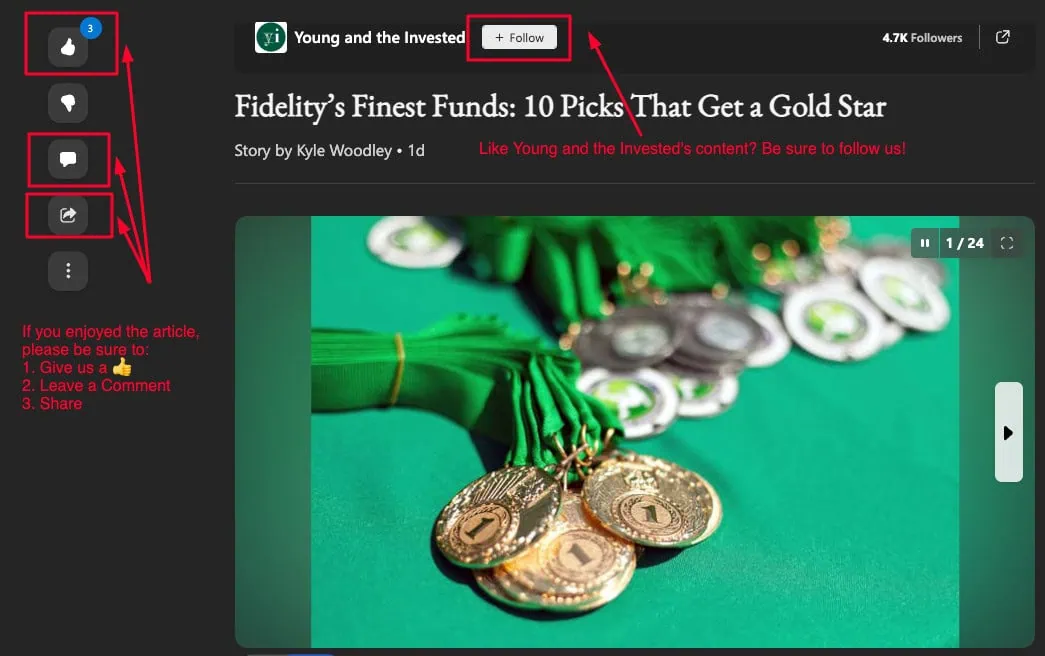
Did you find this article helpful? We’d love to hear your thoughts! Leave a comment with the box on the left-hand side of the screen and share your thoughts.
Also, do you want to stay up-to-date on our latest content?
1. Follow us by clicking the [+ Follow] button above,
2. Subscribe to Retire With Riley, our free weekly retirement planning newsletter, and
3. Give the article a Thumbs Up on the top-left side of the screen.
4. And lastly, if you think this information would benefit your friends and family, don’t hesitate to share it with them!



